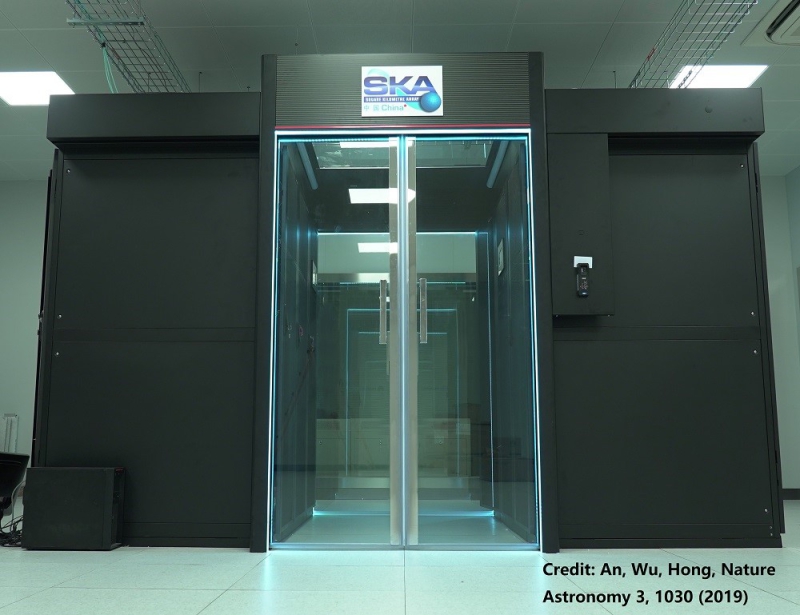[ Instrument Network Instrument R & D ] Recently, Chinese scientists have developed the world's largest radio astronomy observation equipment-the Square Kilometer Array (SKA) 's first regional center prototype. The progress of this work is published in the academic journal Nature Astronomy.
According to An Tao, head of the SKA team at the Shanghai Astronomical Observatory of the Chinese Academy of Sciences, the prototype was developed by the Shanghai Astronomical Observatory with the support and guidance of the Ministry of Science and Technology and the Chinese Academy of Sciences, which will help promote the construction and scientific operation of the SKA regional center in the future.
The SKA telescope is the world's largest radio astronomical telescope to be built by astronomers. It was jointly funded by more than a dozen countries, setting a new record for the construction of a large scientific device by human beings. The SKA telescope will combine the signals received by thousands of small antennas to simulate a giant radio telescope with a total collection area of ​​about one square kilometer. The sensitivity is dozens of times stronger than the most powerful radio telescope in fact today. These antennas include 2,500 butterfly IF antennas and 1.3 million log-period low-frequency antennas. They are mainly distributed in Western Australia and South Africa. They provide the best view of the Milky Way and the least radio signal interference.
Wu Xiangping, chief scientist of Chinese SKA and academician of the Chinese Academy of Sciences, introduced that astronomers will use SKA to study the evolution of the universe, understand the nature of gravity, explore the origin of life, the origin of the cosmic magnetic field, and look for alien civilizations. SKA is expected to make a revolutionary breakthrough in the frontiers of natural science.
Hong Xiaoyu, chief scientist and researcher of the National Key R & D Program, said that SKA will also produce the largest data stream in astronomy history. Once in operation, only in the first phase of SKA (only 10% of the total scale), the generated data will grow at a rate of about 1 million gigabytes (GB) per year, and the corresponding computing power needs to be at least floating point per second The number of operations has reached 3 billion times.
A large number of SKA data and different geographical locations of scientific users need to build a coordination network composed of multiple SKA regional centers for overall coordination. According to the construction plan of the SKA Observatory, the SKA Observatory only preprocesses the observation data, which cannot be directly used for science. The data that scientists need requires detailed analysis. This in-depth analysis process will be completed by the SKA regional centers built on all continents of the world.
"The prototype is expected to be put into use in 2020, providing scientists worldwide with the necessary computing resources, high-quality data products, and convenient technical support to conduct SKA's early scientific research and understand the SKA data challenge." An Tao said, " The pioneering work and hands-on experience of this prototype will be invaluable for improving the design and future large-scale expansion of the SKA regional center. "
Construction of SKA is scheduled to begin next year, and China, one of the founding members, is studying the construction plan of China's SKA regional center. After the completion of the regional center, it will become a platform for multidisciplinary academic integration, in-depth data analysis and scientific research, and advanced technology research and development.
Titanium Disc
Titanium Disc is a versatile and durable component that is widely used in the aerospace, medical, and chemical industries. This type of forging is known for its high strength, excellent corrosion resistance, and biocompatibility. Titanium Disc is produced by forging, which involves heating the titanium alloy to a high temperature and shaping it under high pressure using a hammer or press.
Significant advantage of Titanium Disc is its lightweight nature, which makes it an attractive choice for the aerospace industry. It is also known for its excellent fatigue strength, which allows it to withstand repetitive loading without experiencing failure. This property makes it a popular choice for aircraft and spacecraft components that are subjected to cyclic loading.
Titanium Discs are available in various grades, each with unique properties that make them suitable for specific applications. The selection of the appropriate grade of Titanium Disc depends on the specific application requirements, including the environment, temperature, and pressure. Common grades of Titanium Disc include Grade 1, Grade 2, Grade 5, and Grade 23.
In summary, Titanium Disc is a versatile and durable component used in various industries such as aerospace, medical, and chemical. It offers excellent corrosion resistance, biocompatibility, lightweight, and fatigue strength, making it a popular choice for harsh environments and applications where high performance is critical.
